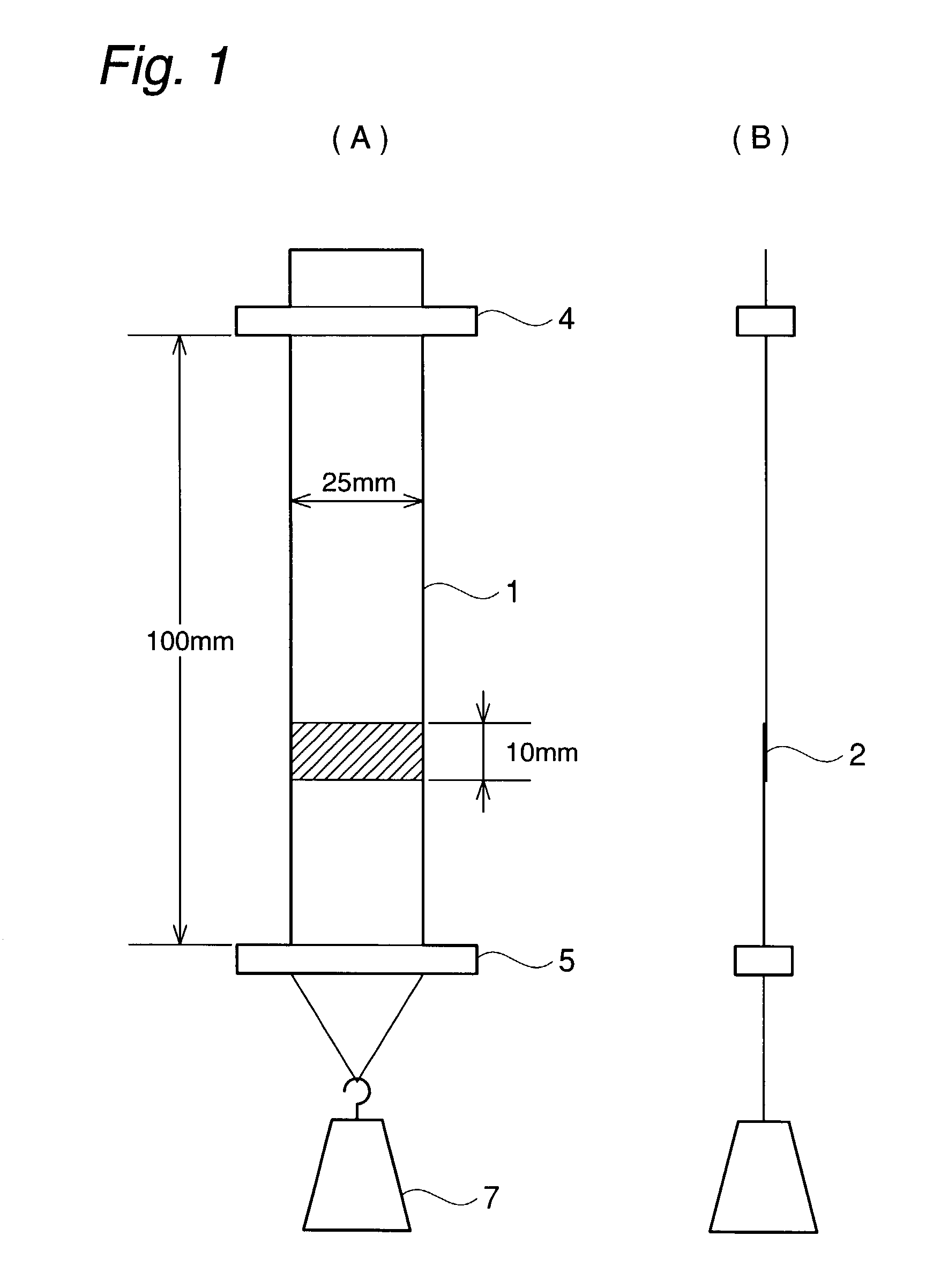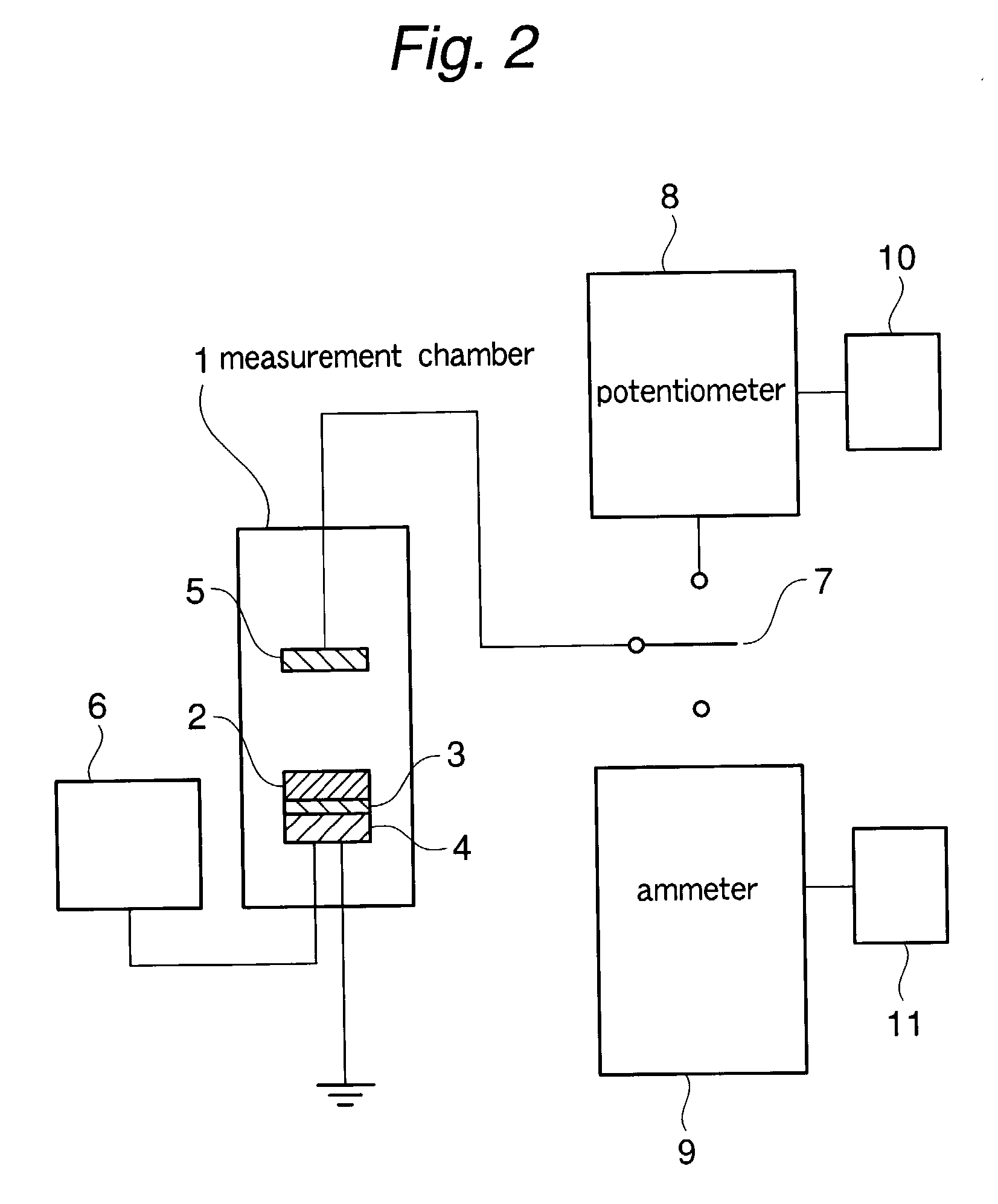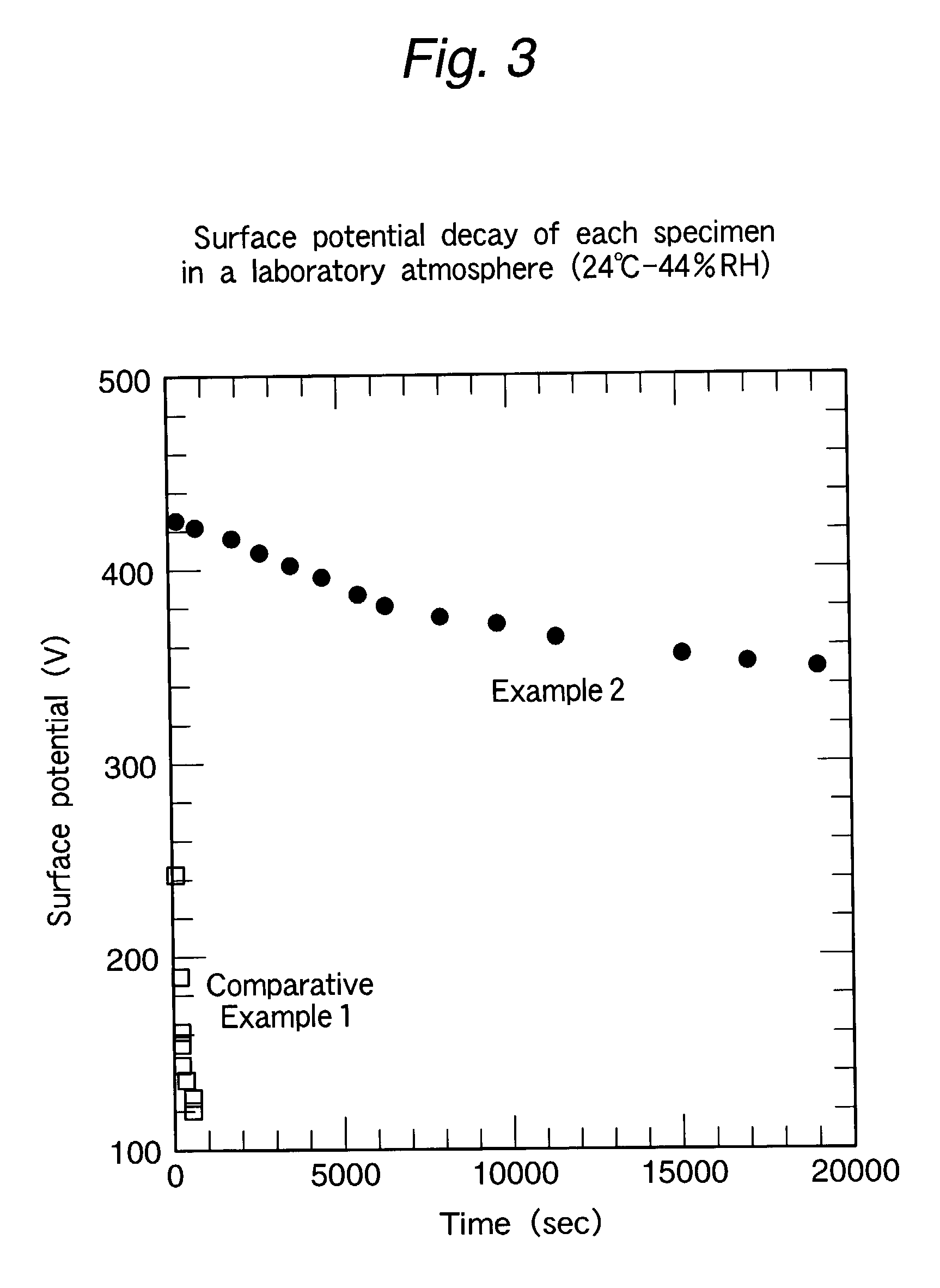Olefin block copolymers, processes for producing the same and uses thereof
a technology of olefin block and copolymer, which is applied in the direction of synthetic resin layered products, transportation and packaging, other medical devices, etc., can solve the problems of poor affinity of polyolefins with various polar substances, metals that cannot be bonded to polar substances or blended with polar resins, and contamination of the surface, so as to improve the dispersion properties of fillers
- Summary
- Abstract
- Description
- Claims
- Application Information
AI Technical Summary
Benefits of technology
Problems solved by technology
Method used
Image
Examples
example 1
[Preparation of Catalyst Solution]
[1714]10.0 mg of bis(1,3-dimethylcyclopentadienyl)zirconium dichloride was weighed and placed in a glass flask purged thoroughly with nitrogen, and a toluene solution of 17.2 mmol in terms of aluminum atom of methylaluminoxane was added thereto. The solution was sonicated at 23° C. for 15 min. An appropriate amount of toluene was added to the solution, and a total amount of 50 ml of the solution was obtained. This solution was used as a catalyst solution.
[Copolymerization of Ethylene / Norbornene]
[1715]In a nitrogen atmosphere at room temperature, 600 ml of a cyclohexane solution containing 20 g of norbornene was placed in a 1-liter stainless steel autoclave purged thoroughly with nitrogen. 0.6 mmol of triisobutylaluminum was added to the autoclave, and nitrogen in the autoclave was replaced with ethylene. The inside of the autoclave was pressurized with ethylene, and then the temperature in the autoclave was raised so that the temperature and the pre...
example 2
[Copolymerization of Ethylene / Propylene / Triene]
[1727]In a nitrogen atmosphere at room temperature, 651 ml of purified heptane, 24 ml of 4,8-dimethyl-1,4,8-decatriene (referred to as DMDT), a heptane solution of 0.75 mmol in terms of aluminum atom of triisobutylaluminum and a toluene solution of 0.021 mmol in terms of boron atom of triphenylcarbeniumtetrakis (pentafluorophenyl)borate were placed in a 2-liter stainless steel autoclave purged thoroughly with nitrogen. After the addition of 9 liters of propylene, the temperature in the autoclave was raised. When the temperature went up to 60° C., the inside of the autoclave was pressurized to 0.9 MPa by supplying ethylene. When the temperature and the pressure in the autoclave went up to 70° C. and 0.9 MPa, respectively, a toluene solution of 0.00105 mmol in terms of titanium atom of [(N-t-butylamido)(tetramethyl-η5-cyclopentadienyl)dimethylsilane]titanium dichloride was forced into the autoclave with pressurized nitrogen to initiate th...
example 3
[Polymerization of Olefin]
[1736]1 liter of purified 4-methyl-1-pentene (referred to as 4MP-1) was placed in a 2-liter stainless steel autoclave purged thoroughly with nitrogen, and nitrogen in the autoclave was replaced with ethylene. A toluene solution of 5.0 mmol-Al in terms of aluminum atom of methylaluminoxane was added. The temperature in the autoclave was raised to 40° C., and 5.0×10−4 mmol-Zr in terms of zirconium atom of biscyclopentadienylzirconium dichloride was added. Ethylene was fed to initiate the polymerization at a pressure of 0.8 MPa. Thereafter, with supplying only ethylene, the polymerization was conducted at a pressure of 0.8 MPa and a temperature of 45° C. for 1 hr.
[1737]After completion of the polymerization, a small amount of methanol was added to the obtained slurry, and then the total amount of the slurry was poured into 4 liters of methanol. The precipitated polymer was filtered off and was dried at 80° C. overnight. The yield of the obtained polymer was 54...
PUM
| Property | Measurement | Unit |
|---|---|---|
| hot melt | aaaaa | aaaaa |
| weight | aaaaa | aaaaa |
Abstract
Description
Claims
Application Information
 Login to View More
Login to View More - R&D
- Intellectual Property
- Life Sciences
- Materials
- Tech Scout
- Unparalleled Data Quality
- Higher Quality Content
- 60% Fewer Hallucinations
Browse by: Latest US Patents, China's latest patents, Technical Efficacy Thesaurus, Application Domain, Technology Topic, Popular Technical Reports.
© 2025 PatSnap. All rights reserved.Legal|Privacy policy|Modern Slavery Act Transparency Statement|Sitemap|About US| Contact US: help@patsnap.com



